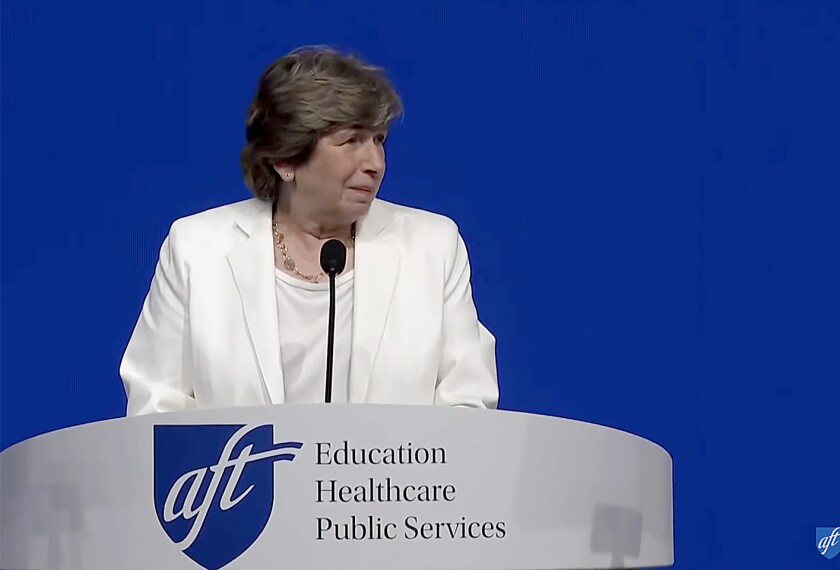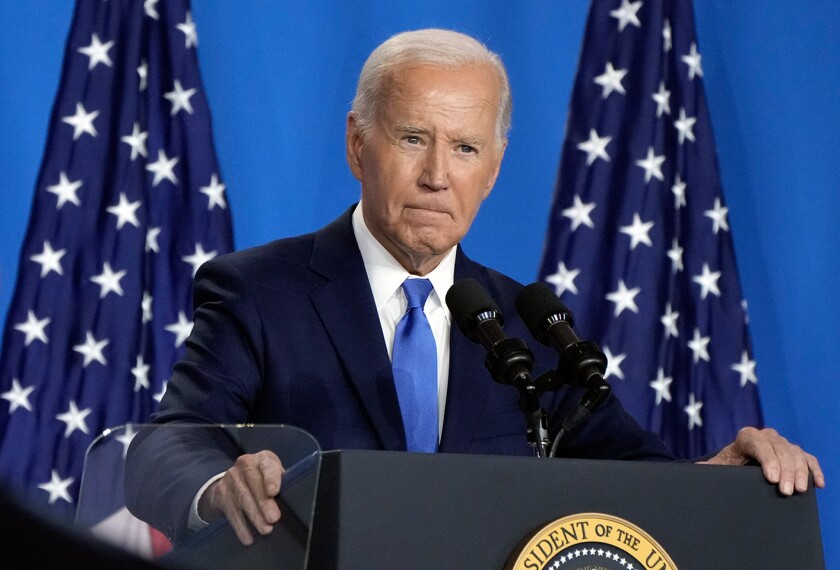The congressional stalemate over the next federal relief bill is hurting low-income districts’ spending and school morale in what’s already amounted to a chaotic and stressful year. Nobody knows that better than the teachers who are on the hook.
After surviving three rounds of layoffs this year alone, Abby Bardanis’ spirits were buoyed earlier this month when students she hadn’t seen since March walked through Enrico Fermi School No. 17 in Rochester, N.Y., to register for class.
But just a week into the school year, New York Gov. Andrew Cuomo, afraid Congress would not help repair the state’s $14 billion budget deficit, was threatening to cut another 20 percent out of Rochester’s budget this year, which would mean more than 800 Rochester teachers would be laid off.
As his threats grew, despite protests, Bardanis assumed she and several of her colleagues were likely to be canned this month.
Then, at the last minute, Cuomo, under immense political pressure, changed his mind and decided to wait until after the election to do budget cuts.
“Every time they announce potential layoffs, it throws everyone into a tizzy,” said Bardanis, a bilingual special education teacher. “If you’re going to say you’re going to do something, stick to it. We’re freaking out and then not freaking out. It’s a constant up and down.”
The congressional delay in passing new aid legislation is having real-life impact close to the ground. Any new congressional aid would be funneled to low-income districts across the country, which are heavily reliant on state sales and income tax revenue that has been wiped out by the coronavirus pandemic.
States now estimate that they will lose close to $500 billion by 2022, and the $13 billion provided to school districts under the federal CARES Act has mostly been distributed and spent. The vast majority of state legislatures have decided to wait to repair this year’s budget hole until Congress decides on whether to provide districts with another relief bill. It remains likely that it won’t come until after this year’s pivotal elections.
Delay Deepens the Threat
As superintendents of low-income districts have explained to their school board members this month, the longer Congress and legislatures wait, the more severe the budget cuts will be and the more likely that they will result in teacher layoffs.
That’s because districts spend the bulk of their money at the beginning of the school year and enter yearlong contracts with vendors to provide a bevy of services.
When states cut their budgets halfway through the fiscal year, district chief financial officers have to cut proportionally more sizeable chunks of money out of their budgets, since they’ve already spent so much of it. They also have to lay off more teachers since they can’t abruptly end contracts they’ve entered.
In addition, school finance experts are worried that revenue forecasts could potentially worsen this winter since states had gambled that a COVID-19 vaccine would have been created by January at least and that the economy would have rebounded by then. It’s becoming more and more clear that neither will happen soon.
“The main thing we’d like for politicians to do right now is their jobs,” said Heather DuBois Bourenane, the executive director of the Wisconsin Public Education Network, a school funding advocacy group, who spoke by phone while stacking more than 2,000 “vote public schools” yard signs in her garage. “Their failure to allow kids to have an equitable opportunity to learn right now, is criminally negligent.”
Wisconsin’s legislature last met in March and has refused to reconvene to readjust its budget, which is now estimated to be $2 billion off projections. School administrators now worry that they will be doubly punished when the legislature finally does reconvene since so many districts lost thousands of students this summer due to the pandemic and won’t get the funding for those students.
“There’s a lot of chaos, confusion, and frustration and fear here,” Bourenane said. “Everything is madness, but nothing is cheaper.”
New York Turmoil
New York’s budget office this year is giving districts the $70 billion it annually spends on schools in monthly payments, the largest of which is in September.
As it became more and more apparent that Congress could not agree on what the next federal bailout package should look like, the governor began withholding 20 percent payments from several state agencies across the state and then threatened to do the same with its education department, which makes up the biggest chunk of the state’s budget.
As Cuomo’s threats escalated, Jasmine Gripper, the executive director of New York’s Alliance for Quality Education, a school funding advocacy group, ramped up her protests.
She sent weekly e-mail blasts detailing for her thousands of members what a 20 percent budget cut would look like in schools. And, despite the pandemic, she and hundreds of parents rallied in front of the legislature in Albany and then in front of the governor’s mansion and paraded in yellow taxicabs down Manhattan streets.
Cuomo’s Sept. 16 announcement to hold off on the September budget cut was a “win, but not a win,” Gripper said. “We live to fight another day.”
For Schenectedy, a 9,000-student, low-income district 200 miles east of Rochester, the governor’s last-minute announcement was too late. The superintendent had already laid off 320 educators, almost half of whom were educators of color, recently recruited into the district as part of a diversity initiative. It’d be too expensive and not financially prudent, to hire them back, a district spokeswoman told the local press.
In Rochester, board chair Van Henri White said he didn’t want to cause a “run on the banks” and urged the board to not announce what a 20 percent budget cut would look like.
“I think we were telling people too quickly what this would mean. and we didn’t even know the depth of the hole we might be in,” he said. “[Cuomo], I think, was using this threat as a way to bargain and pressure the feds to reach some compromise.”
The district realized halfway through last year that it had overestimated its revenue by more than $45 million. That, combined with the state’s pandemic-related budget cuts earlier this year, resulted in more than 300 layoffs.
The community has already been in turmoil. In the last year alone, the district has had three CFOs and two superintendents. The city, one of the poorest in the nation, is reeling from the March death of Daniel Prude, a Black man who was in police custody at the time, and a mass shooting earlier this month which led to the death of two high school students.
“Our kids are experiencing major trauma right now,” White said. The school board last week laid off several nonclassified staff since school buildings are closed. “What our kids need right now is social-emotional support to get through this. Laying off teachers after the school year has started is just cruel. You’re cutting off relationships.”
Bardanis knows intimately how federal and state politicking over K-12 aid impacts the classroom. Three days before school started this year, the district abruptly decided to lay off another round of paraprofessionals and teachers, which resulted in her caseload doubling.
This year, she’s resolved to permanently turn off the news.
“You just have to shut it out and not let it in,” she said. “I just don’t think politicians care about anything or anybody. Do they even listen?”






